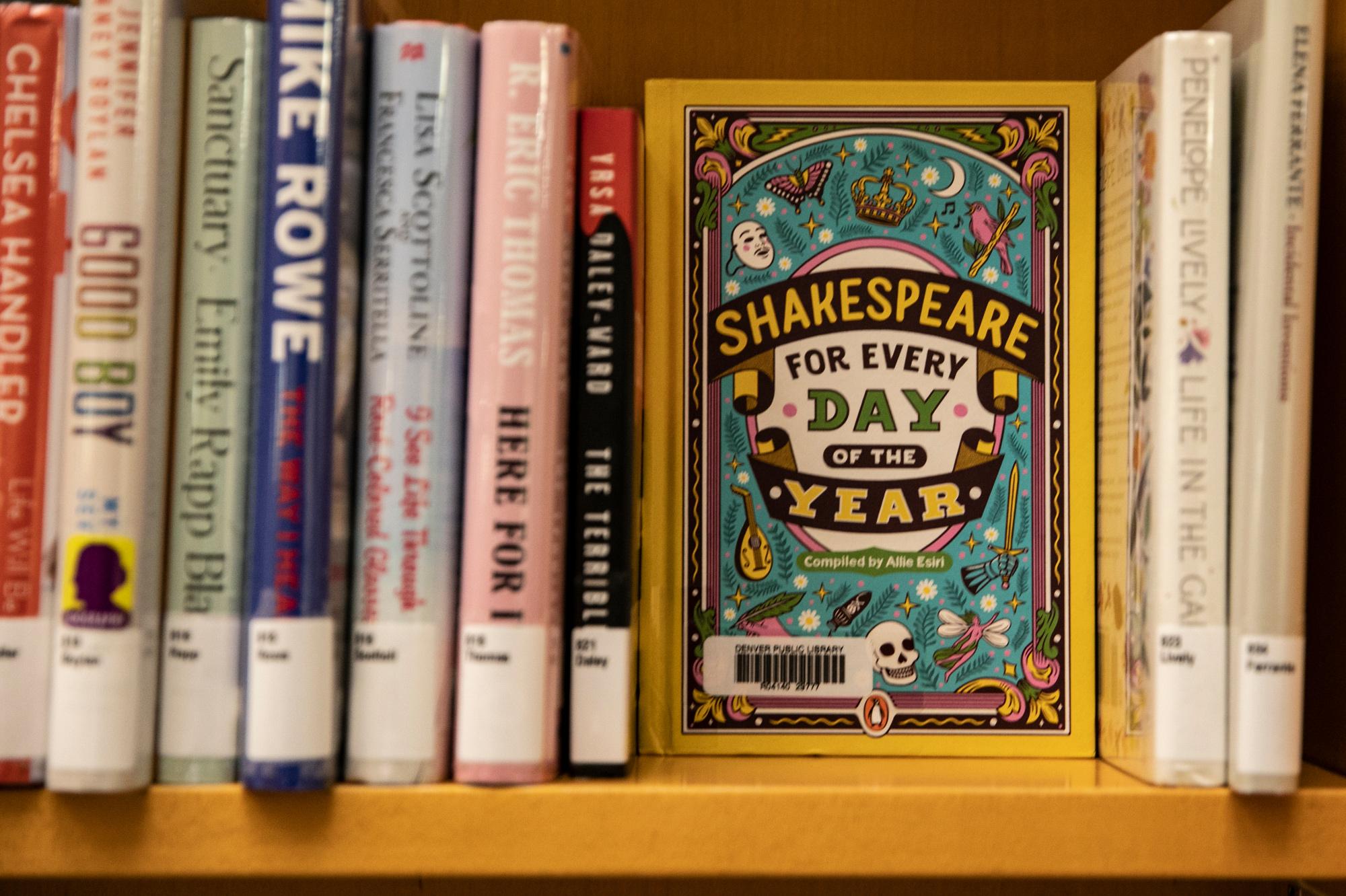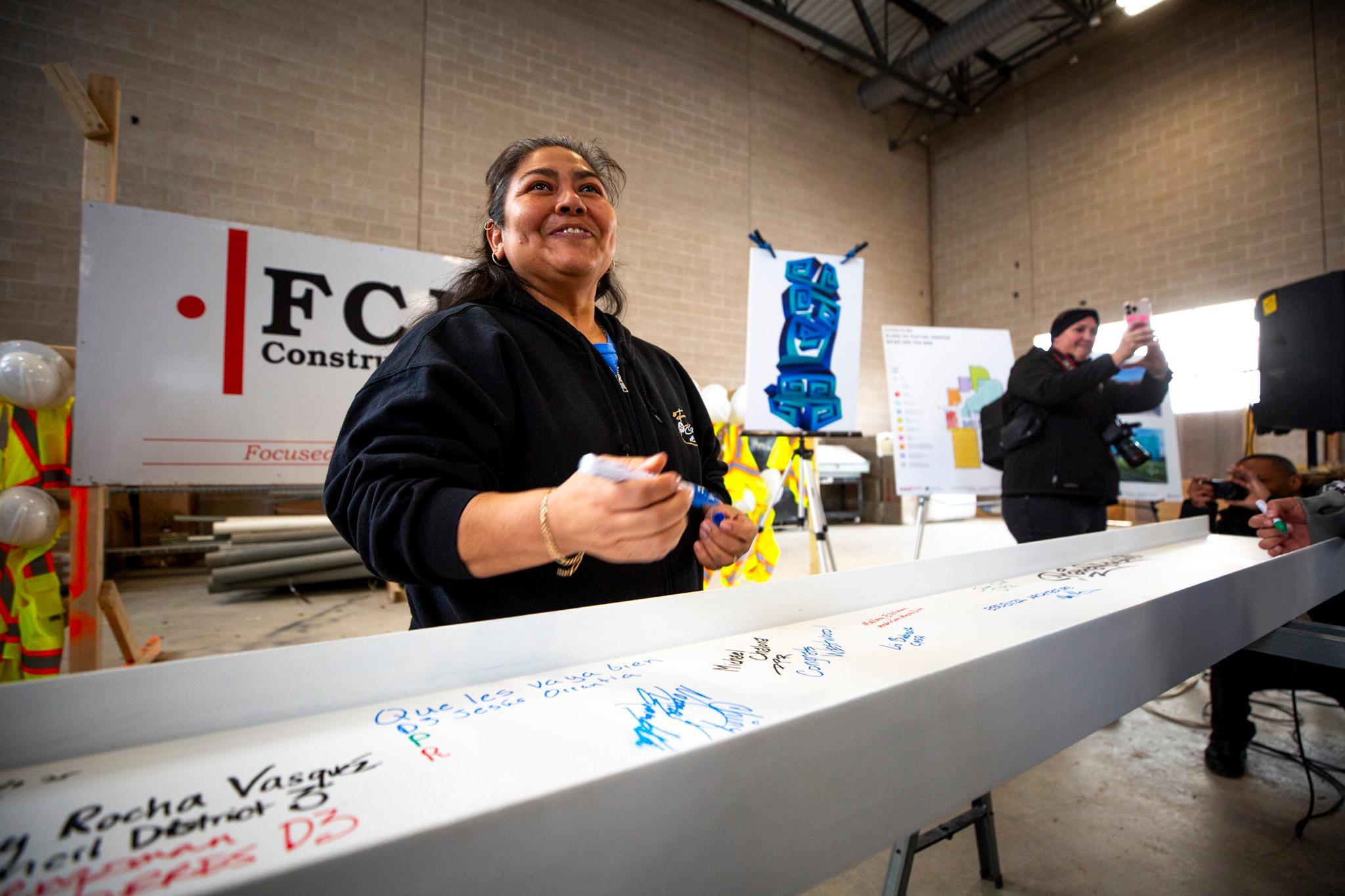Victoria Chaffin, a legal billing specialist by day and thrash metalhead by night, sits on the puffy couch in her Denver living room, grinning as she peers into her personal spider farm.
Chaffin takes a translucent plastic jar, pulsating with fruit flies. She shakes a few flies through a straw into a clear plastic cube. They unwittingly plummet toward their doom.
Inside the cube, a clutter of baby spiders awaits. They cling to the walls, waiting for Chaffin to look away before they gobble up their dinner.

She takes care to keep her new pets full. If they get too hungry, they might resort to cannibalism — a bad habit that’s hard to shake.
Watching this sacrificial rite after weeks of covering political drama, crime and immigration, I wonder: What am I doing here?
The answer is not that complicated. I met Victoria Chaffin through our Denverite Classifieds series, where Denverites meet other Denverites. In her posting, she described herself as a “full-time spider breeder looking for nerds and alt friends to enjoy outings.”
I am a nerd, so I called her up, and she invited me over for a spider feeding. Needing a break from hard news, I took her up on the offer to learn about spider feeding and breeding — and here I was, witnessing the drama of life and death on a coffee table.
After the babies eat, Chaffin feeds her bigger jumping spiders a supersized snack to stave off their cannibalistic urges: silkworms. They look dead, until the spider venom penetrates them and they squirm one last time.

What makes a baby jumping spider a pet, and a silkworm food for that pet, when most people view them both as pests?
Perspective.
“Some people keep mice as pets,” Chaffin says. “And some people feed them to their snake.”
Most of the baby spiders are smaller than a Grape Nut.
They don’t seem particularly interested in leaving their cubes and hopping onto Chaffin’s hand, despite her urging.
When one finally does, it hangs out for a bit before leaping to the floor and disappearing into the carpet.
When the babies grow up, Chaffin might sell them for $25 to $45, depending on their size. But for now, the babies are like her kids. And she wants the runaway spiderling — a pet for today and a long-term investment for tomorrow — back on her hand.

I spot the baby waiting on the carpet. It’s frozen, hoping we look away. And then it darts. After a short chase, Chaffin relaxes as she finally ushers the spiderling back into its home.
She swears the eight-legged leapers have distinct personalities. As those personalities evolve, she’s started naming them.
The mom, dubbed Mama, fiercely protects her babies and refuses to come out when strangers are present. Chaffin named one of the babies Shadow — a curious tween arachnid.

Chaffin has always loved spiders.
A couple months ago, she ordered her first four jumping spiders.
She’s not sure if one was already pregnant, or if they bred in her City Park apartment.
But one of the spiders started growing… and growing… and growing.

Chaffin worried something was wrong, so she posted an image of the spider to an arachnophilic corner of Reddit. A squabble erupted: Some argued she had overfed the spider. Others claimed the spider was pregnant.
Soon, the spider mom settled the feud with two fuzzy egg sacs. After a few months, tiny, yellowish spiderlings crawled out, while some of their smaller siblings stayed in the sling.
Mama would leave yellow droplets of spider milk, rich in sugar, fats and proteins around the sac. Some tots enjoyed the snack-on-the-go, while other babies would sip milk straight from the birth canal.

So I ask: Is a spider’s birth canal more like an anus, a vagina or both? Maybe they have the all-of-the-above orifice known as a cloaca, where the reproductive and digestive tracks merge?
Chaffin picks up her phone.
“Do spiders have cloacas?” Chaffin asks. The answer befuddles her. “Oh, they actually do. They do. I was wrong. OK, so their birthing canal is also their butthole.”
But do spiders have cloacas?
We really didn’t want to mess up a spider fact in our spider article. We got clashing explanations about spider cloacas from spider social media and other sources. ChatGPT and Google’s AI, as they often do, gave us confidently contradictory information.
We finally reached out to Butterfly Pavilion's Entomology Manager, Cori Brant, to clear things up.
“Spiders do have a stercoral pocket also called a ‘cloaca’ that connects into the hind gut before opening into the anus,” Brant wrote in an email.
But that’s a different sort of cloaca than some vertebrates have.

For vertebrates, the cloaca is the outlet for intestinal, urinary and genital systems. For spiders, uric acid and soil waste combine and then move through the anus. The genitals, it turns out, have nothing to do with that cloaca of a spider.
So, for Chaffin’s jumping spiders, their buttholes are not their birthing canals or baby spider milk troughs.
“Long story short, same word but very different meanings between vertebrate and invertebrate,” explained Brant.
There’s more to learn every day.
Chaffin has long been obsessed with other oddball animals.
She started her collection with Mango, a rotund South American “Pac-Man” frog with a massive mouth that looks like the Atari ghost eater. On this October night, Mango’s tumefied, suffering from what Chaffin calls his “piss balloon” — the bloat that happens when her frog has to take a leak.
Soon, he’ll be relieved, but for now, he’s awkward.
Getting this urine-pressurized frog was the beginning of an animal arms race in Chaffin’s household. After Mango came the jumping spiders.
Then, Chaffin’s fiance, a Siberian asylum seeker who delivers packages for Amazon by day and lacerates himself with death metal by night, got jealous. So, he bought a tarantula.

In turn, Chaffin bought a skink — a bashful lizard. She named him Aegon after the Game of Thrones character.
Now, her fiance, who declined to talk to me, is beginning to look for his next pet for their collection.
“I'm trying to convince him that we should wait ‘til we get a house,” Chaffin said. “We're trying to save up for a house.”

But if she can find a female tarantula to pair with her fiance’s, she might try another round of breeding.
Chaffin and her fiance are set to marry this fall. They don’t plan to have human children.
“There’s something about giving birth,” she says, “that just creeps me out.”













